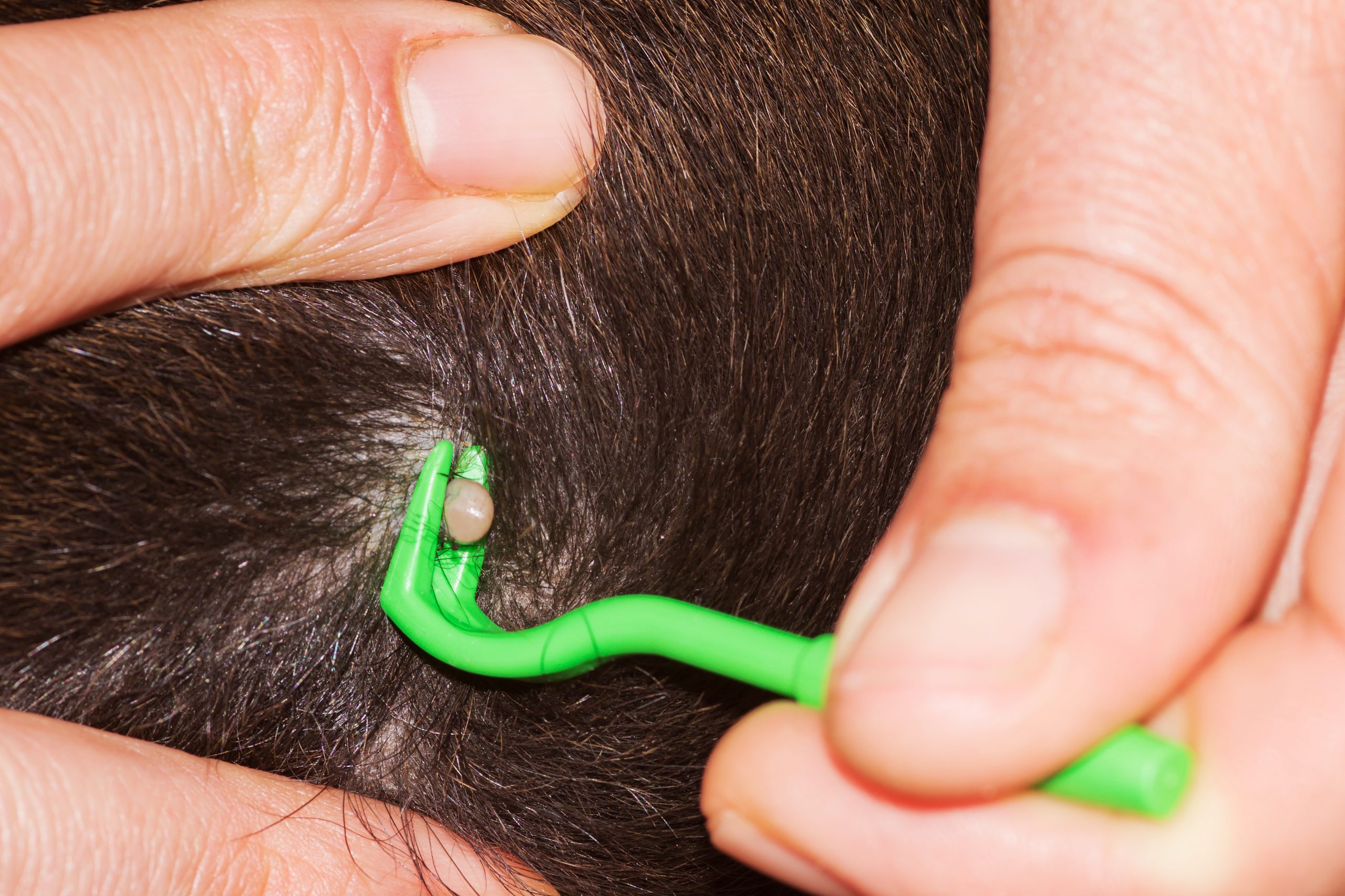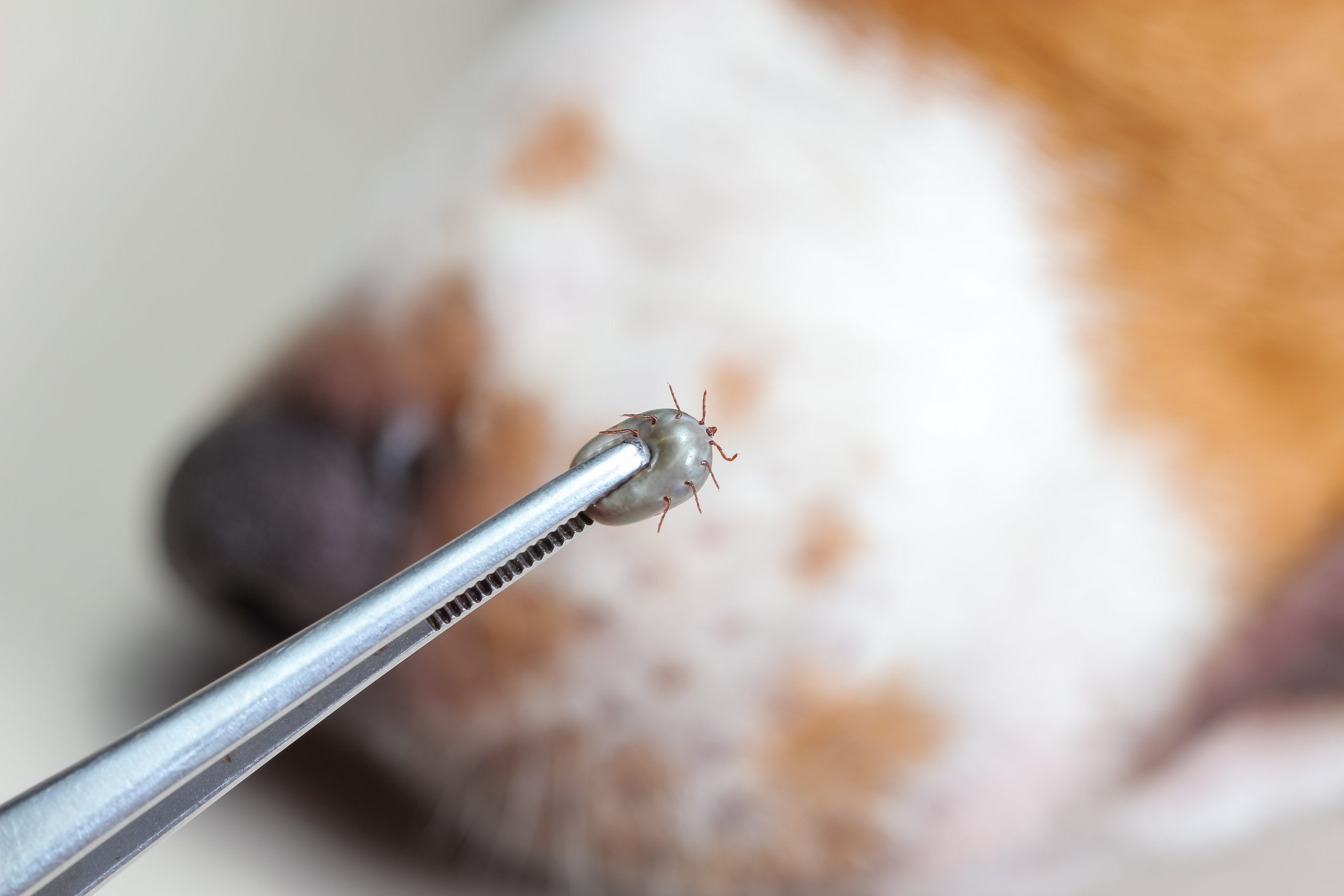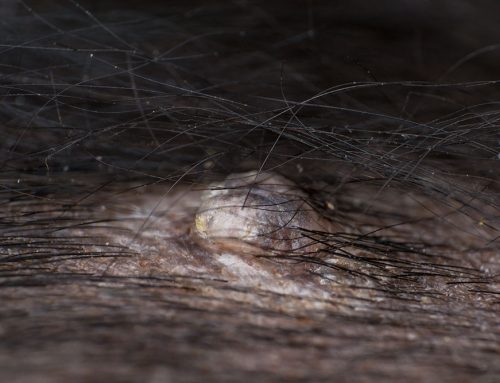You’re leisurely petting your dog or cat when you find a small seed-sized lump. You automatically tense—your mind racing. Is this a tumor? Is this a tick? You part your pet’s hair and find an unsightly eight-legged arachnid with its pinschers embedded in your pet’s precious skin.
What now?
The Gentle Vet team recommends resisting the urge to take dramatic action. Instead, follow these simple steps.
#1: Stay calm to keep your pet calm
Pets are incredibly in tune with their owner’s behavior—a simple change in how you pet them or look at them can send perceptive dogs and cats into a literal tailspin or searching for the nearest exit. Unnecessary panic can also cause pets to react defensively, biting or scratching in self-defense.
While finding an attached tick is likely unexpected, keep your cool to keep your pet cool. Remember—safe, prompt removal is key for preventing disease and, if you panic, incomplete tick removal or injury may result.
If you can’t immediately remove the tick because you don’t have the proper supplies, mentally note the tick’s location. Repeating the location out loud can help commit the spot to memory (e.g., “right shoulder,” “left inside thigh”).
#2: Distract your pet or have someone gently restrain them
Although some pets are unphased by a simple tick removal, others may be distressed, so you must know your pet and anticipate their behavior.
If your pet tends to stress easily or react to grooming, a treat-based distraction, such as peanut butter or cheese spread smeared on the inside of a coffee cup for dogs, or tuna or wet food on a lickable mat for cats, will help. If someone can help with restraining your pet, ask that they gently hug your pet to help keep them secure and stationary during the removal process.
#3: Use the right tools—not your fingers—to protect yourself and your pet

Although many pet owners’ first reaction is to grab and pull the tick with their fingers, this method frequently results in incomplete removal, with the tick’s head stuck in the skin and the pet owner exposed to tick-borne pathogens.
The Gentle Vet team recommends keeping one or more tick removal tools on hand. Our favorites include:
- Tweezers or forceps
- The Tick Key
- The Tick Twister
#4: Part your pet’s hair and grasp the tick close to your pet’s skin
If you’re using tweezers or forceps, part your pet’s hair, and grasp the tick as close to your pet’s skin as possible, taking care that you do not pinch your pet. If you’re using a tick key or other device, you may need to scoop or slide the item from the side or rear of the tick as you move toward the head. Pull straight up with steady gentle pressure, and avoid twisting, jerking, or squeezing, which may damage the tick, or cause your pet discomfort. This upward motion should result in a clean, complete removal.
#5: Ensure proper tick disposal and check your pet’s skin
The Gentle Vet team understands that once you have pulled the tick off your pet, you’ll want to get rid of it as fast as possible while minimizing your exposure.
Treat live or dead ticks in the same manner to avoid exposure to harmful bacteria. Dead ticks may be discarded in the trash, but live ticks should be handled in one of three ways to prevent reattachment:
- Flush the tick down the toilet
- Seal the tick in tape or a plastic bag
- Drown the tick in isopropyl alcohol
Wash your hands thoroughly after handling a tick or tick removal tool. Inspect your pet’s skin and check the area daily. Although pets bitten by a Lyme disease-infected tick do not develop the bulls-eye rash that people do, they may show localized swelling, irritation, and redness.
#6: Check your pet for additional ticks
This is the perfect time to inspect your pet for additional ticks. Although ticks can bite and feed anywhere on your pet, these savvy blood-suckers prefer well-concealed areas, such as:
- Under the collar
- Around the eyes
- Inside the ears
- Under the tail
- Between the toes
- Behind the front or back legs
- Along the abdomen or groin
Depending on the tick’s life stage, they can range from poppy seed-sized juvenile (i.e., nymph) ticks to apple seed-sized adults. Engorged (i.e., blood-filled) ticks are much larger and may be grey in color.
#7: Review your pet’s tick prevention plan
Ideally, if your pet is on a year-round tick prevention plan, the only ticks you should find on your pet are dead ticks. However, because ticks must bite and feed to die, you may encounter a live tick that recently attached.
If you’re finding an increasing number of ticks on your pet, reevaluate your pet’s prevention plan with our veterinarian. Contact The Gentle Vet to schedule an appointment and ensure your pet is protected against ticks this spring and summer








Leave A Comment